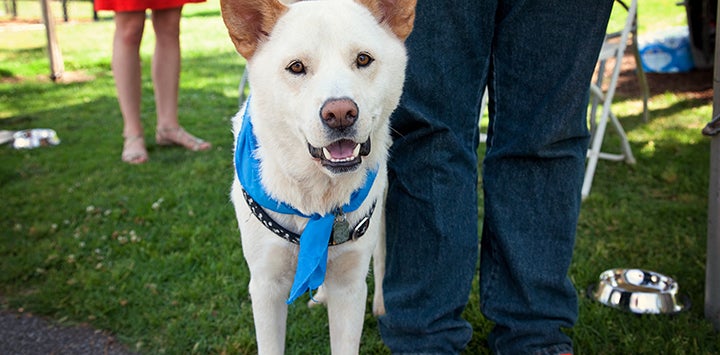
Grants for Animal Rescue to Save More Lives: The Rachael Ray Save Them All Grants
The Rachael Ray Save Them All Grants fund projects that increase lifesaving of cats and dogs in U.S. shelters. We welcome project proposals from public and private shelters, as well as rescue groups and other animal welfare organizations focused on impacting lifesaving at shelters.
Learn more about the basics of the Rachael Ray Save Them All grants and hear from a grant recipient on the Best Friends Podcast.
Who can apply?
- Public and private shelters with a lifesaving gap (save rate at 90% or below)
- Public and private shelters, rescue groups, and other animal welfare organizations without a lifesaving gap whose project will be impacting a shelter that has a lifesaving gap (has not yet achieved a 90% save rate)
Click here to learn about eligibility requirements.
What is a lifesaving gap?
A community is considered to have no lifesaving gap when every brick-and-mortar shelter located within the county has a save rate of 90% or higher.
The lifesaving gap is the number of cats and dogs who would have had to be saved last year in order to achieve the 90% save rate threshold.
If your project is funded, Best Friends will do the calculations to determine the reduction in lifesaving gap for you using the data for each shelter your project impacts that you provide to us each month.
If you are curious how we do it, here is the calculation we use to determine the lifesaving gap for each impacted shelter:
[(Live Intakes) - (Lost in Care) - (Shelter Deaths*)] divided by (Live Intakes)
* Shelter Deaths = animals euthanized, killed, or died in care
What types of projects are considered?
Projects can be focused on just one event/program or can include multiple events/programs.
Before you apply, review your region’s funding priorities to ensure your proposed project will aligns.
Here are a few examples of previously funded Save Them All Grants
- Implementing programs that provide intake prevention services for the community
- Increase of Return to Field or Adoption via working cat program
- Providing advanced medical care for target number of at risk pets
- Return to owner efforts expanded through waived Return to Owner fees
- Shelter enrichment for large dogs at-risk for kennel decline
- Training and behavior services for at-risk dogs at shelter
- Transferring in at risk population (i.e. underage kittens, adult cats, large breed dogs) from targeted shelter
Click here to see the full list of grants awarded during our last cycle.
How much funding can I request?
Your organization can apply for a grant of up to $50,000, with the amount requested not exceeding 10% of your operating budget.
- The average grant awarded last year was just over $25,000, therefore granting may only cover partial funding needed for your project.
Do you still have questions about if your proposed project would qualify for consideration?
- Schedule a consultation with a strategist in your region.
What are the reporting requirements if my project is funded?
Reports are assigned as follow-ups in our grant management platform.
- Monthly reporting requirements include providing overall intake and outcome data for your own shelter or for all impacted shelters, as applicable.
- Quarterly reporting requirements include providing the number of impacts (adoptions, S/Ns, TNRs, etc) you have completed with the awarded funds. We also ask you to provide a brief update on how your project is progressing, as well as a story and photo from your project.
Click here for more information on recipient reporting requirements.
Regional priorities
Click on the name of your region below to learn about funding priorities and to schedule time to consult with your regional team before you apply.
Southeast: Alabama, Florida, Georgia, Mississippi, South Carolina
South Central: Arkansas, Louisiana, Oklahoma, Texas
Great Plains: Iowa, Kansas, Minnesota, Missouri, Nebraska, North Dakota, South Dakota
Mountain West: Arizona, Colorado, Idaho, Montana, Nevada, New Mexico, Utah, Wyoming
Northeast: Connecticut, Delaware, Maine, Massachusetts, New Hampshire, New Jersey, New York, Pennsylvania, Rhode Island, Vermont
Pacific: Alaska, California, Hawaii, Oregon, Washington
Midwest: Illinois, Indiana, Michigan, Ohio, West Virginia, Wisconsin
Mid-Atlantic: District of Columbia, Kentucky, Maryland, North Carolina, Tennessee, Virginia
I want to learn more about:


